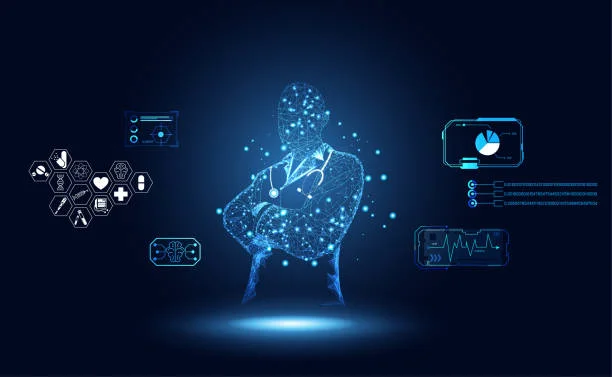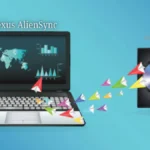Is Our Healthcare Tech Ready for the Future?
With the explosion of data from wearables, telehealth platforms, and Electronic Health Records (EHRs), healthcare technology faces an enormous challenge building systems that are not just functional, but fast, secure, and infinitely scalable.
Patients expect instant access to information. Clinicians rely on real-time analytics for decision-making. Regulators demand bulletproof compliance.
To meet all three, healthcare needs more than traditional code; it needs a robust, future-ready technology stack.
Dive deeper into insights that matter—check out this related post for more ideas.
Enter Golang : A Language Built for the Demands of Digital Health
Developed by Google, Golang (Go) is designed for performance, concurrency, and reliability, three pillars that modern healthcare software depends on. As the backbone of several large-scale systems across industries, Go has proven its ability to deliver speed and scalability without compromising security.
For organizations investing in digital health transformation, leveraging professional golang development services can unlock immense potential , enabling faster, safer, and more cost-efficient software for hospitals, clinics, and med-tech startups alike.
Blazing Performance & Concurrency
Healthcare systems process millions of simultaneous requests every day from IoT device readings and patient record updates to insurance claims and telemedicine sessions.
Golang’s lightweight concurrency model, powered by goroutines, makes it possible to handle all these processes in real time. This means faster dashboards, zero lag in patient data syncing, and seamless remote consultations.
In an environment where every millisecond can impact patient outcomes, Go’s speed can quite literally make a difference between delay and diagnosis.
Scalability for Growth
From nationwide telemedicine networks to genomic research platforms, healthcare software must scale without sacrificing performance.
Go’s compiled nature and efficient memory usage give it a low resource footprint. This allows healthcare systems to support thousands (or even millions) of active users while keeping infrastructure costs predictable.
For developers building cloud-native solutions or distributed healthcare systems, Go’s architecture ensures horizontal scalability, an essential factor for growth-oriented healthcare platforms built on microservices.
Simplicity, Security, and Maintainability
Healthcare software isn’t just about speed; it’s about trust and traceability. Code must be clear, auditable, and compliant with standards like HIPAA and GDPR.
Golang’s minimalist syntax and strong typing make it easier to maintain clean, secure, and testable code. Fewer dependencies, less complexity, and predictable behavior reduce bugs and security vulnerabilities.
By collaborating with specialized Healthcare Software Development Services , teams can leverage Go to create systems where compliance and performance go hand-in-hand — a must for EHR systems, patient portals, and telemedicine APIs.
Ideal Use Cases of Golang in Healthcare
Go isn’t just fast — it’s practical. It fits perfectly into the healthcare ecosystem where reliability, uptime, and data flow matter most.
Here are some ideal scenarios where Golang excels:
- Backend Services for high-traffic Electronic Health Record (EHR) and EMR systems.
- Data Pipelines that aggregate and process information from IoMT (Internet of Medical Things) devices.
- High-Performance APIs for telemedicine and mobile health applications.
- Cloud-Native Microservices for modular, scalable healthcare architectures.
In all these cases, Go provides unmatched performance with lower operational costs, helping healthcare organizations build long-term digital infrastructure without excessive technical debt.
Powering Real-Time and AI-Driven Healthcare
Healthcare’s future is data-driven and data doesn’t wait.
Go’s concurrency and low-latency design make it ideal for AI-enabled diagnosis systems, predictive analytics, and real-time monitoring dashboards.
For example, Go-based microservices can process streams of patient vitals, lab results, and imaging data — feeding them directly into ML algorithms or predictive models. The result is faster clinical insights, smarter alerts, and more personalized care.
The Strategic Advantage of Choosing Go
Beyond technical specs, Golang offers a strategic advantage. It reduces time-to-market, cuts down infrastructure expenses, and simplifies long-term maintenance — three critical goals for any healthcare enterprise.
Its growing developer community and enterprise-grade reliability ensure continued innovation and ecosystem support.
By adopting Go, healthcare organizations aren’t just upgrading their backend — they’re investing in a future-proof foundation for innovation, interoperability, and patient-centric care.
Conclusion
The future of healthcare will depend on how well technology can keep up with the growing demand for speed, data accuracy, and patient personalization. Golang is emerging as the silent force behind this transformation powering healthcare platforms that are faster, more reliable, and easier to scale.
Its simplicity allows development teams to innovate confidently, its concurrency ensures real-time data flow, and its security features protect what matters most from patient trust. Whether it’s enabling remote care, processing IoT medical data, or supporting AI-driven analytics, Golang has proven itself as the ideal foundation for modern healthtech.
As the healthcare industry continues to evolve, embracing Golang-powered software isn’t just about keeping pace with technology; it’s about building a future-ready digital healthcare ecosystem that delivers care with precision, speed, and reliability.
Get inspired—read our featured posts packed with tips, trends, and top insights.





